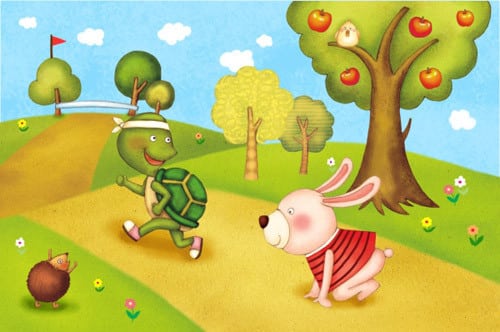Korean Folktales for Kids

In many Korean folktales, animals such as tigers, rabbits, and cranes frequently feature as protagonists, imbued with human-like qualities that reflect universal truths and values. Whether heard around the hearth on a cold winter’s night or shared in classrooms and libraries, Korean children folktales remain a cherished aspect of Korean culture.
Here are 20 popular Korean children folktales:
- The Rabbit and the Turtle (토끼와 거북이): This classic tale teaches the lesson of perseverance and slow and steady progress winning the race.
- The Sun and the Moon (해와 달이 되다): This folktale explains the story of how the sun and the moon came to exist in the sky, often teaching themes of cooperation and harmony.
- The Woodcutter and the Fairy (벌목꾼과 요정): This story revolves around a woodcutter who saves a fairy and is granted three wishes in return.
- The Tiger and the Persimmon (호랑이와 감나무): In this tale, a tiger gets tricked by a clever old woman into believing that a persimmon seed will grow into a tiger if it’s planted and well taken care of.
- The Fairy and the Woodcutter (요정과 벌목꾼): This story tells of a poor woodcutter who is rewarded by a fairy for his kindness, leading to his eventual prosperity.
- The Grateful Tiger (고맙다하는 호랑이): A story about a man who saves a tiger from a trap and later finds the tiger returning to help him when he is in trouble.
- The Blind Man and the Cripple (장애인과 못난이): This tale teaches the importance of kindness and helping others through the story of a blind man and a cripple who form a mutually beneficial partnership.
- The Goblin and the Drum (도깨비와 북): In this folktale, a goblin steals a boy’s drum, and the boy must outwit the goblin to get it back, showcasing themes of bravery and wit.
- The Heungbu and Nolbu (흥부와 놀부): This is a story of two brothers with contrasting personalities and their differing fortunes, emphasizing the values of generosity and humility.
- The Fairy’s Shoes (요정의 신발): This tale follows a poor girl who receives a pair of magical shoes from a fairy, which help her overcome adversity and find happiness.
- The Magic Paintbrush (마법 붓): This tale revolves around a poor but talented boy who receives a magic paintbrush that brings whatever he paints to life, teaching lessons about the responsible use of power and the value of creativity.
- The Green Frog (녹색 개구리): In this story, a kind-hearted girl saves a frog, which later turns out to be a prince under a curse, emphasizing the importance of compassion and empathy.
- The Fairy and the Crane (요정과 학): A story about a crane who helps a fairy and is rewarded in return, highlighting themes of gratitude and reciprocity.
- The Two Brothers (두 형제): This folktale tells the story of two brothers who embark on separate journeys and eventually reunite, illustrating the bond of family and the power of perseverance.
- The Boy Who Cried Tiger (호랑이를 부른 소년): Inspired by Aesop’s fable, this story follows a mischievous boy who repeatedly tricks his village into believing there’s a tiger nearby, but when a real tiger appears, no one believes him.
- The Robber and the Judge (도둑과 판사): This tale centers around a robber who seeks redemption after being caught by a wise judge, showcasing themes of justice and forgiveness.
- The Talking Fish (말하는 물고기): In this story, a fisherman catches a magical fish that can speak and grants wishes, but the fisherman learns the consequences of greed and selfishness.
- The Magic Cloak (마법의 외투): A tale about a poor boy who receives a cloak that grants his wishes, but he must learn to use it wisely to avoid unintended consequences.
- The King’s Daughter and the Frog (왕자의 딸과 개구리): This story follows a princess who befriends a talking frog and learns valuable lessons about inner beauty and true friendship.
- The Woodcutter and the Magic Ginseng (벌목꾼과 마법인삼): In this folktale, a woodcutter discovers a magical ginseng root that grants him good fortune, but he must outsmart a greedy neighbor who seeks to steal it.

